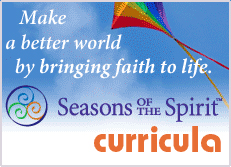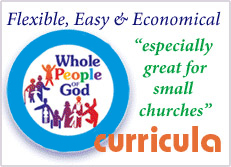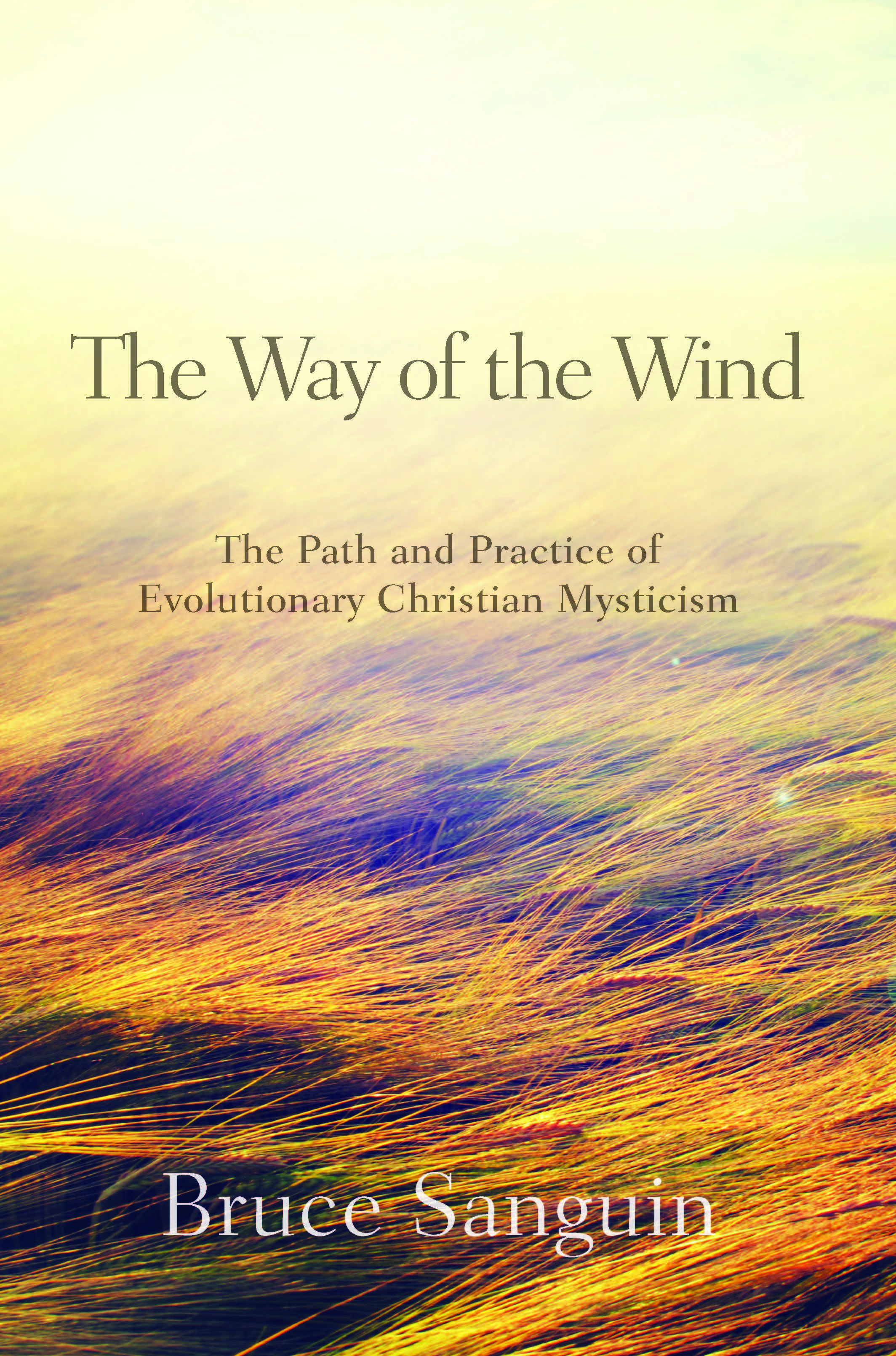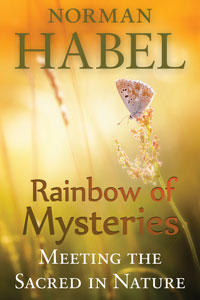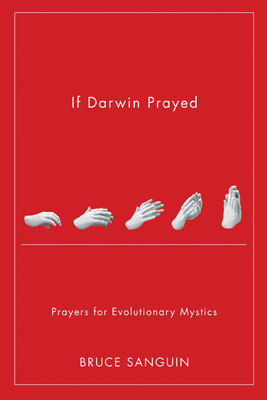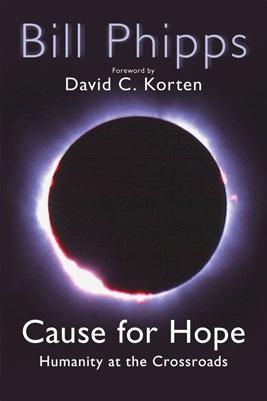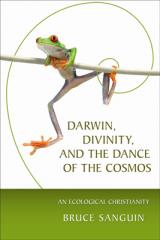
Darwin, Divinity, and the Dance of the Cosmos
An Ecological ChristianityBruce Sanguin
256 PP | 6" x 9"
Paper
ISBN: 978-1-55145-545-7
In March 2005, the United Nations released its Millennium Ecosystem Assessment. Among the findings: 2/3 of the world's ecosystems are seriously degraded; 90 percent of the world's fish stocks are depleted; and climate change is not just something that might happen, it is already upon us.
Many people, including many Christians, will hear this and delude themselves into thinking that technology can and will save the day. A wiser and more helpful response, especially for Christians, is to find a way to step back into the flow of nature from which we have extricated ourselves.
In Darwin, Divinity, and the Dance of the Cosmos, Bruce Sanguin shows us the way. Sanguin draws on the latest scientific understandings of the nature of the universe and weaves them together with biblical meta-narratives and frequently overlooked strands of the Judeo-Christian tradition to create an ecological and truly evolutionary Christian theology - a feat few theologians have even attempted.
The importance of this accomplishment can hardly be overstated. As Sanguin writes, "It's time for the Christian church to get with the cosmological program. We need new wineskins for the new wine the Holy One is pouring out in the 21st century. Twenty-first-century science has provided us with new a new story of creation that needs to inform our biblical stories of creation. We now know, for instance, that we live in an evolving or evolutionary universe. Evolution is the way that the Holy creates in space and in time, in every sphere: material, biological, social, cultural, psychological, and spiritual. This new cosmology simply cannot be contained by old models and images of God, or by old ways of being the church."
As his starting point, Sanguin encourages readers to rediscover awe - an attitude very much absent from the modern mindset. "We don't see what is before us," he writes, "and as a result, we are plundering our planet at an unprecedented rate. If we could see what is before our eyes, day in and day out, the sacred radiance of creation would drop us to our knees and render us speechless."
Central to this recovery of awe is the new Great Story, the 14-billion-year history of the cosmos. Into this Great Story, first told by Thomas Berry and by mathematical physicist and cosmologist Brian Swimme, Sanguin reintroduces the presence God.
Heady as all this sounds, it has very practical implications for the mission of the church. Sanguin writes: "In the first centuries after Jesus' death, his disciples looked around at their world and found that what was needed by way of response to the crisis of their age was hospitals for the sick and food for the poor. This is what compassion required of them. Mission is determined by the context in which the church finds itself in each new age. I am suggesting that, today, there is nothing more critical than a compassionate response to the plight of our planet. The church must be at the forefront of shifting human consciousness away from an ethic of domination for economic gain and toward a spirituality of awe.
This book - and more importantly the work of integration it suggests - represents a fundamental challenge to our theological and liturgical models. But for those who are ready and willing to embark on an exciting theological journey of discovery, it also represents a rich opportunity to become reacquainted with the Spirit of God moving in and through the very dynamics of an unfolding universe.
Bruce Sanguin, Author
Bruce is a leader in evolutionary spirituality. He experienced an awakening from the illusion of separation from the cosmos and Spirit over 20 years ago, and ever since has been writing and traveling the world giving talks on evolutionary mysticism. Now retired from congregational ministry in the United Church of Canada he continues his inquiry into the lineage of the mystic Jesus of Nazareth from an evolutionary worldview. He is the author of six books, including If Darwin Prayed: Prayers for Evolutionary Mystics, which won an IPPY Gold Medal for the best inspirational book of 2012, Darwin, Divinity, and the Dance of the Cosmos: An Ecological Christianity and The Emerging Church: A Model for Change & a Map for Renewal. Bruce wrote the Participant Guide and was featured in the DVD curriculum, Painting the Stars: Religion and Evolving Faith. His latest book, The Evolving Mystic and the Path of Jesus (2015), explores the life of the evolving mystic along with new images for Jesus and fresh interpretations of his teachings.
Bruce writes a weekly blog, interprets scripture from an evolutionary perspective, and interviews luminaries at his his on-line membership site, Home for Evolving Mystics, which is dedicated to inspiring and re-Sourcing every day mystics on their evolving soul-path. www.brucesanguin.com
Media Reviews
Rev. Dr. Robert Cornwall, Lompoc, CA, http://pastorbobcornwall.blogspot.com/se
Bruce Sanguin. Darwin, Divinity, and the Dance of the Cosmos: An Ecological Christianity. (Kelowna, BC, Canada: Copperhouse Books, 2007), 288 pgs.
A doctrine of creation can come in many forms, from literalist to metaphorical. Bruce Sanguin is a prime example of one who seeks to understand creation in metaphorical terms that allow not just for the accommodation of evolution to the Christian message, but to allow evolutionary theory to be the driving force of a re-imagining of creation. But this isn’t just a book about the intersection of religion and science; it is an attempt to recreate Christianity in a form that is green. As the subtitle makes clear, this is an argument for an “ecological Christianity.”
Sanguin writes from the perspective of a Canadian Progressive Christian pastor who sees his own theology as a living out of what Marcus Borg calls the “emerging paradigm.” Although Borg doesn’t appear regularly in the book, it is Borg’s vision of a new Christianity that drives the book. Metaphor is key to the conversation. And in line with the book’s title, Sanguin believes that “the emerging paradigm requires us to evolve” (pg. 31). Like Borg, Sanguin embraces a panentheistic idea of God’s relationship to Creation and insists that Christian faith and Christian faith language must be updated and outdated beliefs abandoned.
With Borg as a starting point Sanguin’s conversation partners include Creation theologian Matthew Fox, feminist Elizabeth Johnson, and most especially cosmologist and physicist Brian Swimme. From Swimme, Sanguin took the idea that the universe itself is conscious, and thus the universe itself is a “sacred story.” With evolution as the primary driver of the story, Sanguin lays out an understanding of reality that is focused on an interconnectedness of all things. Although evolutionary theory can point to humankind as a natural endpoint of the process, our author insists that humans have been dethroned and need to get over their superiority complex, for we as humans are not the only beings that exist in the image of God – for all things reflect the image of God.
If Christian faith needs updating, then science needs to be reminded that it doesn’t have all the answers. Sanguin is concerned that in our modern world we have “disenchanted” the universe, so that we no longer have a sense of wonder about the world in which we live. And so mystery needs to be re-introduced. Science needs this conversation in part because of our human tendency towards hubris and a separation of science from ethics. This is not an argument for a simple rationalist Christianity. Though at times it seems New Agish, there is much to be said for the call to humility and a recognition that we’re not the rulers of all that exists.
The danger in a conversation between science and religion is that theology becomes reduced to science and God is introduced only as the solution to the gaps in our knowledge. And while he dialogues with science throughout, he insists that it doesn’t have all the answers. Thus, we must turn to mystery, which is “about entering into the interior depths of reality, both known and unknown” (p. 74). Although rejecting the idea of a God who is the grand designer who exists entirely separate from nature, Sanguin insists that the Creation exhibits signs and hints of intelligence. And thus evolution is in itself a “divine unfolding.” It isn’t purposeless, as some would suggest, and it’s not the survival of the fittest, but the survival of the “most loving.” History in his understanding is forward moving and linear – and thus very much Jewish inspired. Beginning from the Big Bang, the Creation has moved towards increasing consciousness.
The God of evolution is as one might expect, an immanent presence, who is not found to be “a controlling presence but as the cosmic urge to self-transcendence” (p. 121). And with such a staring point, one can understand the biblical stories, including Jesus’ parables – which he sees as nature stories. Scripture tells four stories, in his mind: the stories of exodus, exile, temple, and allurement. As for Jesus, he is “greened.” That is, he has been re-imagined from an ecological perspective. Adapting the language of kingdom, he re-envisions the “kin-dom of God.” To understand the divinity of Jesus, he turns to feminism and its claim on the idea of Sophia – Wisdom. Jesus is the embodiment of Wisdom and is also “Sophia’s child.” Again turning to science for help, he finds in Quantum physics and Chaos Theory a way of understanding Jesus of Nazareth to be an expression of divine presence.
In the end the message is one of connectiveness. We are connected to each other – as humans – but not just to the human – but to the entirety of the universe. What we forget, and Sanguin reminds us of, is that reality goes beyond the mere physical/material to the subatomic and deeper. It is here that we understand that Jesus is the one in whom all things hold together.
This is a book that holds evolution in high regard. It is a witness of divine presence. At times it seems to glorify evolution without recognizing the down side. That tendency is in the end recognized and dealt with. Nature is indeed beautiful and thus we see in it signs of intelligence and design, but it can also be brutal and that reality he understands must be acknowledged. Part of that acknowledgment includes a jettisoning of divine omnipotence. Although he is Progressive and wishes to update our faith and our faith language he’s not ready to jettison everything, including the idea of eternal life. With Sophia/Wisdom as the key, he understands eternity as the gathering up of that which is good into the mind and heart of God, who not only remembers but experiences our realities. Such a theology must be lived, and thus there is a place for meditation and liturgy, and service.
At times the book appears almost fanciful, with its embrace of mystery and metaphor taking off in sometimes strange directions. His interpretation of the Lord’s Prayer (Our Father) seemed somewhat odd. Etymology can be helpful, but it also can prove meaningless, as I felt as I read his interpretations of the aramaic that undergirds the sentences of that important Christian prayer. Indeed, at times I found his interpretations of theology and Scripture to be just a bit too far a field. Metaphor, after all, does have its referents. This is not a book for everyone, but for someone who is struggling with faith and how to live faithfully in a confusing world this will be helpful. As a call to consider the sacredness of the universe this is an important statement – even if it goes in my mind a bit too far at times.
This isn’t the work of a professional theologian, but is instead the work of a pastor who seeks to re-envision the Christian faith for a new day. And for that we can be grateful.
Reviewed by:
Rev. Dr. Robert Cornwall
Pastor, First Christian Church
Lompoc, CA
Studies in Religion Vol. 41 (3)
Christopher Hrynkow, Mauro Centre for Peace and Justice, St. Paul’s College, University of ManitobaIn Darwin, Divinity and the Dance of the Cosmos, Bruce Sanguin brings together aspects of his personal experiences and intellectual learning to argue for the necessity of an ecological updating of Christian faith and practice. The current phase of Sanguin’s personal journey towards the embrace of green spirituality began in Milton, Ontario, when he was able to appreciate a well-crafted omelette with a sense of wondrous awe. Later, while making a spiritual retreat, reading Brian Swimme’s The Universe is a Green Dragon helped Sanguin to solidify connections amongst such awe, his seminary training and the new cosmology. Despite its title, Darwin, Divinity and the Dance of the Cosmos is much more influenced by cosmological spirituality inspired by the likes of Swimme, Thomas Berry and Matthew Fox than by Darwinian evolutionary theory. As such, while evolutionary consciousness is cited as an aspect of his programming for ecological updating, it is really cosmological consciousness that principally informs the monograph’s suggestions for a greener Christianity. To be sure, Sanguin’s suggestions are grounded in ecological concepts and in the Earth community. However, they also strive to foster an eco-spirituality based upon an understanding of humanity’s location within an enchanted universe that is itself in relationship as the ‘‘kin-dom’’ (rather than the kingdom) of God.
To support this relational model for updating Christianity, Sanguin brings into play what would be, save for his excellent prose, a bewildering number of authors and concepts. For instance, he builds a large portion of his case upon the concept of Sophia (Wisdom), which enters Judaism and, later, Christianity, through cross-cultural contact. The Wisdom tradition applied to the contemporary ecological crisis is used to imply the foolishness of biocide, which he understands as the ‘‘killing’’ of Earth and biological systems. He also references everything from gravity’s correlation with alluring love to the example of scuba divers freeing a humpback whale from crab nets being seen as acting as God’s children. Some of the connections Sanguin makes in this monograph are a bit tenuous, especially when, despite avowed support for a postmodern ethic of acceptance, he applies theories in ways their originators never intended, and shades peoples’ experiences outside of categories to which they would themselves subscribe. Additionally, perhaps as part and parcel of the price paid for crafting an accessible book, Darwin, Divinity and the Dance of the Cosmos is rather under-referenced by academic standards, making it difficult to discern where and when Sanguin might be moving beyond creative synthesis towards a more unique contribution to scholarship in the area of Christianity and Ecology.
Despite such tensions, Sanguin successfully illustrates aspects of the integration of evolutionary cosmological consciousness in his daily life, including examples arising from his frequently referenced practice of Bikram Yoga and his work as a United Church minister at Vancouver’s Canadian Memorial Church and Centre for Peace. In the end, this connection to the material, his sharing of personal anecdotes and the practical suggestions growing from his ministry will likely combine to leave the reader with the impression that Sanguin is genuinely committed to participating in an ecological updating of Christianity. It is ultimately this feature of Darwin, Divinity and the Dance of the Cosmos, along with its accessible prose, that is well poised to hold the interest of both general readers and students assigned this text as part of coursework dealing with issues at the intersection of Christianity and Ecology. In the latter context, Sanguin’s book would be particularly useful for introducing the subject matter of green Christian spirituality because the breadth of Darwin, Divinity and the Dance of the Cosmos is well suited to fostering classroom conversation and will give an instructor numerous points of entry to discuss convergent and divergent suggestions for an ecological updating of Christianity.
I have discovered, during the last ten years in Vancouver, Canada, a vibrant and dynamic spiritual community composed of New Agers, Buddhists, Sikhs, Jews, Wiccans, and Sufis, to name a few. But without question it is the Christians who are most deeply distrusted and discounted among these spiritually inclined people. A deep suspicion persists that Christianity is anachronistic, that we’re not “with the times.” Our images and models of God, the way we worship, the songs we sing, our prayers to a satellite God – whom we expect to beam back answers from some location outside the universe – just don’t fit for the spiritually inclined.
In other words, it’s time for the Christian church to get with the cosmological program. We need new wineskins for the new wine the Holy One is pouring out in the 21st century. There is a new story of creation, which needs to inform our biblical stories of creation. We now know that we live in an evolutionary universe. It follows that evolution is the way the Holy creates in space and in time and in every sphere: material, biological, social, cultural, psychological, and spiritual. This is the new cosmology which simply cannot be contained by old models and images of God, and outmoded ways of being the church.
Updating Our Faith
We do not yet know what to do with this “new” story of the universe as Christians. While some theologians are just now beginning to take this story seriously, it is conspicuous by its absence in our Sunday morning services. I remember visiting a church in Boston while I was on study leave. By the time the service ended, I realized that I could have been worshipping on the moon; it contained nothing that gave me any clue I was in the city of Boston. The liturgy was devoid of any sense of time or place. In similar fashion, I suspect most people leave church on Sunday mornings without any sense of their spiritual journey taking place within an evolutionary universe, or even on the planet Earth! Too often, there aren’t even many clues that we have entered the 21st century. Much of the music we ask people to sing reflects the 17th-, 18th-, and 19th-century worldviews in which they were written. We read Bible passages without helping listeners to hear or understand them in the cosmological, social, and cultural context of the writer. I know doctors and lawyers who still believe that being a Christian means taking the story of creation from Genesis literally. We have at our disposal a new understanding of the universe, but we operate out of an old one. The work of integrating this new story represents a fundamental challenge to our theological and liturgical models. It also represents a rich opportunity to become reacquainted with the Spirit of God moving in and through the very dynamics of the unfolding universe.
If only these cosmological updates were as simple a matter as the ones I can download painlessly on my computer. Every once in a while, an icon pops up, informs me that an update is available, and asks if I’d like to download it at this time. If I want the particular program to function optimally on my computer, I simply click on the agreement to update, wait a few minutes, and presto, I’m ready for whatever cyberspace has to throw at me. I can even set my computer to automatically receive and integrate these updates as I sleep.
There are ways to update our faith, of course, but unfortunately these can’t be downloaded directly to our neocortex. Updates in the life of the Christian tend to be far more unsettling. This is because our religious beliefs and practices form the core of our identity. When we identify ourselves with our beliefs, an update can feel like we’re being torn apart. Nevertheless, if we want to function optimally as people of the Christian faith, updating is even more critical in the realm of faith than it is with our computers. The predominant virus that slows us down is called “outdated beliefs.” Updating, I contend, is a work of God’s Spirit in an evolutionary universe.
Take salvation. The word itself means to make whole, or to heal. For at least the last 300 years, the church has regarded the planet as a kind of background stage upon which the drama of private salvation has been played out. Most of Christianity continues to be involved in what Thomas Berry calls a “redemption mystique,” We are obsessed with our sinfulness and with whether we’re “saved.” The purpose of Jesus’ death, according to this fall/redemption model, was to redeem us from our innate depravity, thus saving our souls for eternal life, in a heavenly realm, somewhere beyond this universe. The vast majority of Christians are so focused on their own “salvation,” or on saving others, that they are blind to the deterioration of the very ecosystems that sustain their private dramas. Even in those denominations, like my own, that have moved beyond thinking that God is primarily concerned with the salvation of private souls, we still focus almost exclusively on the human realm of creation. It’s time we place the salvation (healing) of the planet in the foreground of our mission concerns.
CHAPTER OUTLINES
Chapter 1: Coming Home To The Cosmos
The current planetary crisis – global warming, species extinction, and the degradation of all the biosystems of the earth – is a spiritual crisis. We have forgotten our deep intimacy with the cosmos and with the planet. Bruce Sanguin shares his deeply personal story of coming home to the cosmos – how the cosmos and the planet came alive for him as his identity shifted from living on the earth to living as the earth in human form. As we begin to appreciate the 14-billion-year story of creation as a single, continuous event, we recover a felt sense of our radical belonging. Reconnecting with the cosmos and the earth is a spiritual conversion, and is central to what it means to be Christian in the 21st century.
Chapter 2: The Weaning From Wonder
We will not save what we do not love, and we will not love what we do not regard as sacred, says Thomas Berry. Most theological models present God as located outside creation. Scientific rationalism systematically voided the cosmos of Spirit, leaving humans to make meaning out of an essentially meaningless universe. Emptied of sacred meaning and purpose, the earth and her creatures became commodities to serve the marketplace god of the 21st century. The way home is a recovery of the spirituality of awe – noticing that all creation is radiant with Spirit.
Chapter 3: The Common Creation Story as Sacred Revelation
Richard Dawkins is wrong. Evolution is not natural selection plus random mutation plus deep time. Evolution is the story of Spirit. In eight succinct epochs, from the Big Bang to the brain of Einstein, the evolutionary story is told as a sacred unfolding of Spirit in time and space. The psalmist got it exactly right – creation is proclaiming the glory of God – not through “intelligent design,” but by design for evolution by an Intelligence that honours our freedom.
Chapter 4: Evolution As Divine Unfolding
Sanguin gathers up the insights of the new cosmology, biology, and complexity theory to illustrate that the evolutionary principle of creative emergence requires a new way of thinking about God – an evolutionary God. This God is deeply embedded in creation, working from the inside out to fashion a new creation, over and over again. We discover, using the prophet Isaiah’s words, that the “new thing” God is doing flows from a natural grace, not supernatural intervention.
Chapter 5: Bible Stories in a Cosmic Context
What happens when we view the central narratives of the Bible – the story of Exodus, Exile, Sacrifice, and Call – through a cosmological and ecological lens? We discover that God’s desire for liberation extends to other-than-human species, that extinction is an absolute form of exile, that sacrifice is an essential dynamic of an evolving universe, and that the whole cosmos, from electrons to eagles, feel the “call” toward increased complexity, consciousness, and beauty. Most importantly, we discover that scripture is a rich resource in helping us in the sacred work of healing both the planet and our relationship to it.
Chapter 6: Jesus’ Teachings: An Ecological Perspective
Now, using the same lens, zoom in on the teachings of Jesus of Nazareth. The result is some very original midrash on familiar metaphors and parables of Jesus, such as the Kingdom of God and the parable of the Prodigal Son. Preachers concerned with our ecological crisis will get lots of gems for Sunday morning. The chapter ends with a cosmological rendering of the Lord’s Prayer.
Chapter 7: The Irresistible Sophia: Wisdom Christology and the Ecological Imperative
Sophia who? Suppressed, but not forgotten, the Jewish Wisdom Goddess makes an appearance in this chapter. Sanguin makes a compelling case that the New Testament writers used the template of the Sophia tradition to tell the story of Jesus of Nazareth. He concludes that She is the sacred and immanent intelligence of the universe – the “pattern that connects.” Moving from the macro-level of cosmology to the micro-level of quantum physics, the wisdom of the feminine divine is revealed as a radical and pervasive interconnectedness.
Chapter 8: Wising Up: Spirituality and Praxis for Planetary Christians
As we deconstruct the cultural narratives of Empire, consumerism, and celebrity, we leave the path of foolishness and learn to walk according to Wisdom’s ways. Here we find practical tips for the reclamation of a spirituality of awe and the greening of our congregations. To have the mind and heart of the Christ in the 21st century is turn our energy to the healing of our planet that God so loves.


